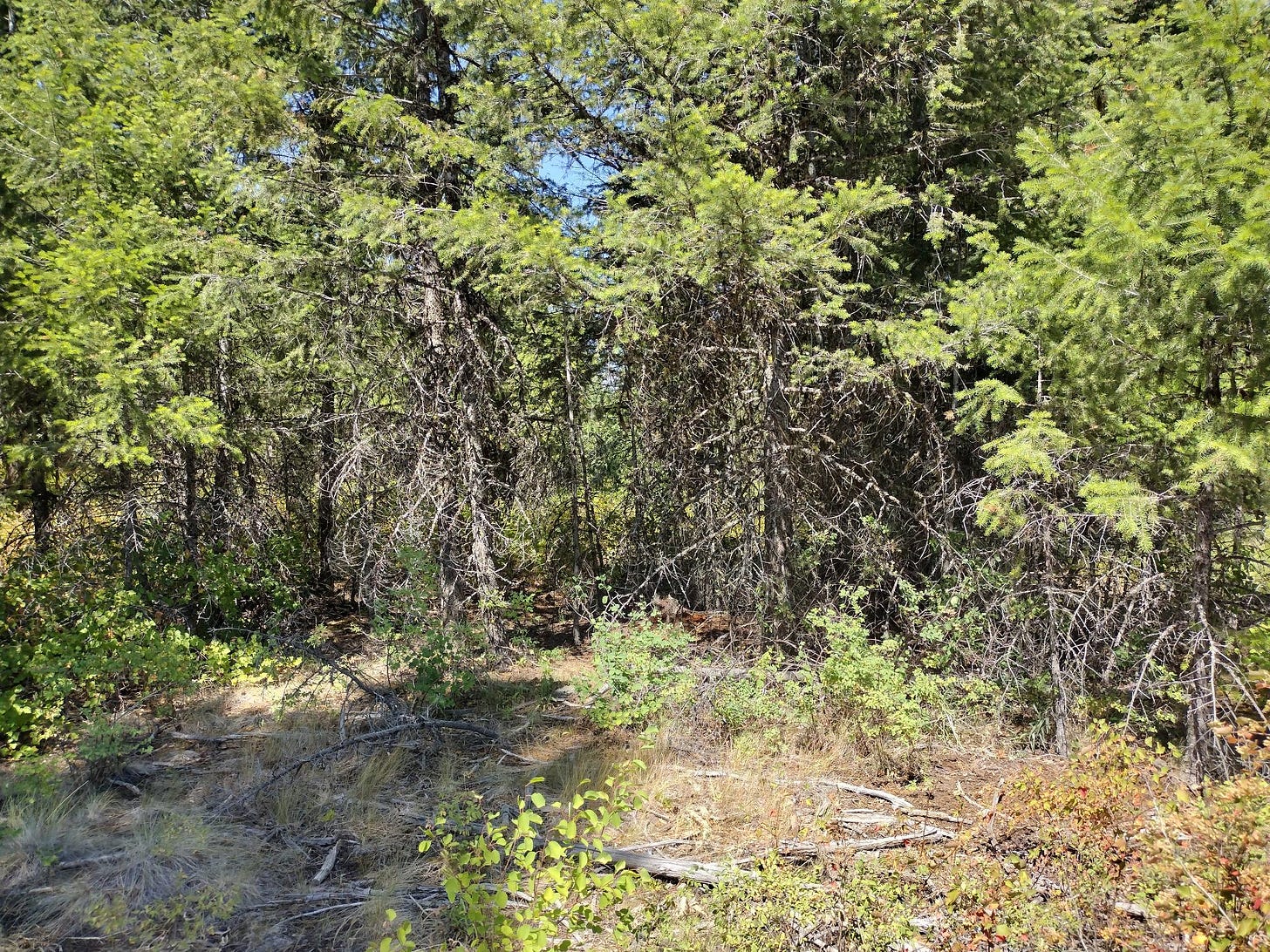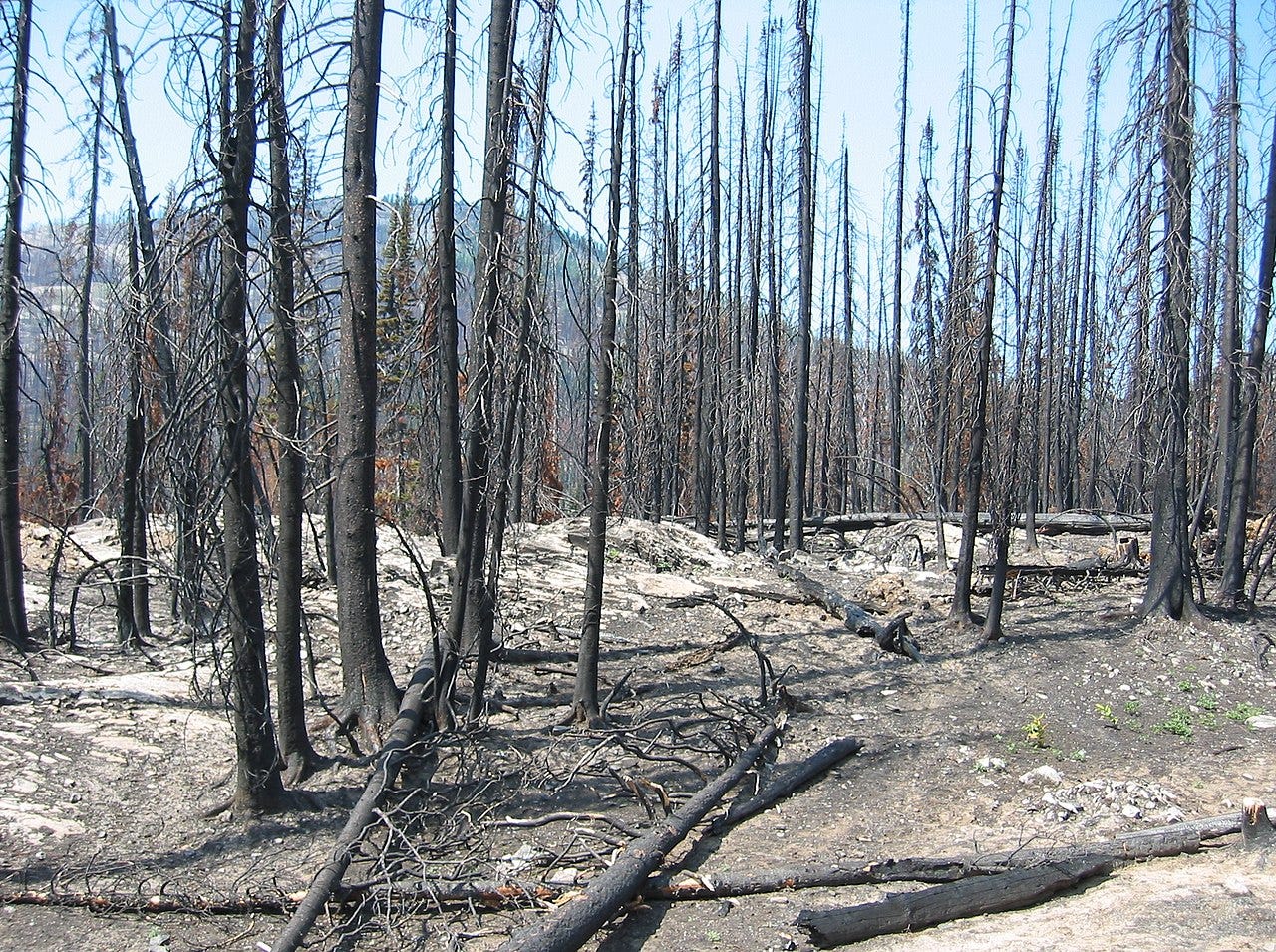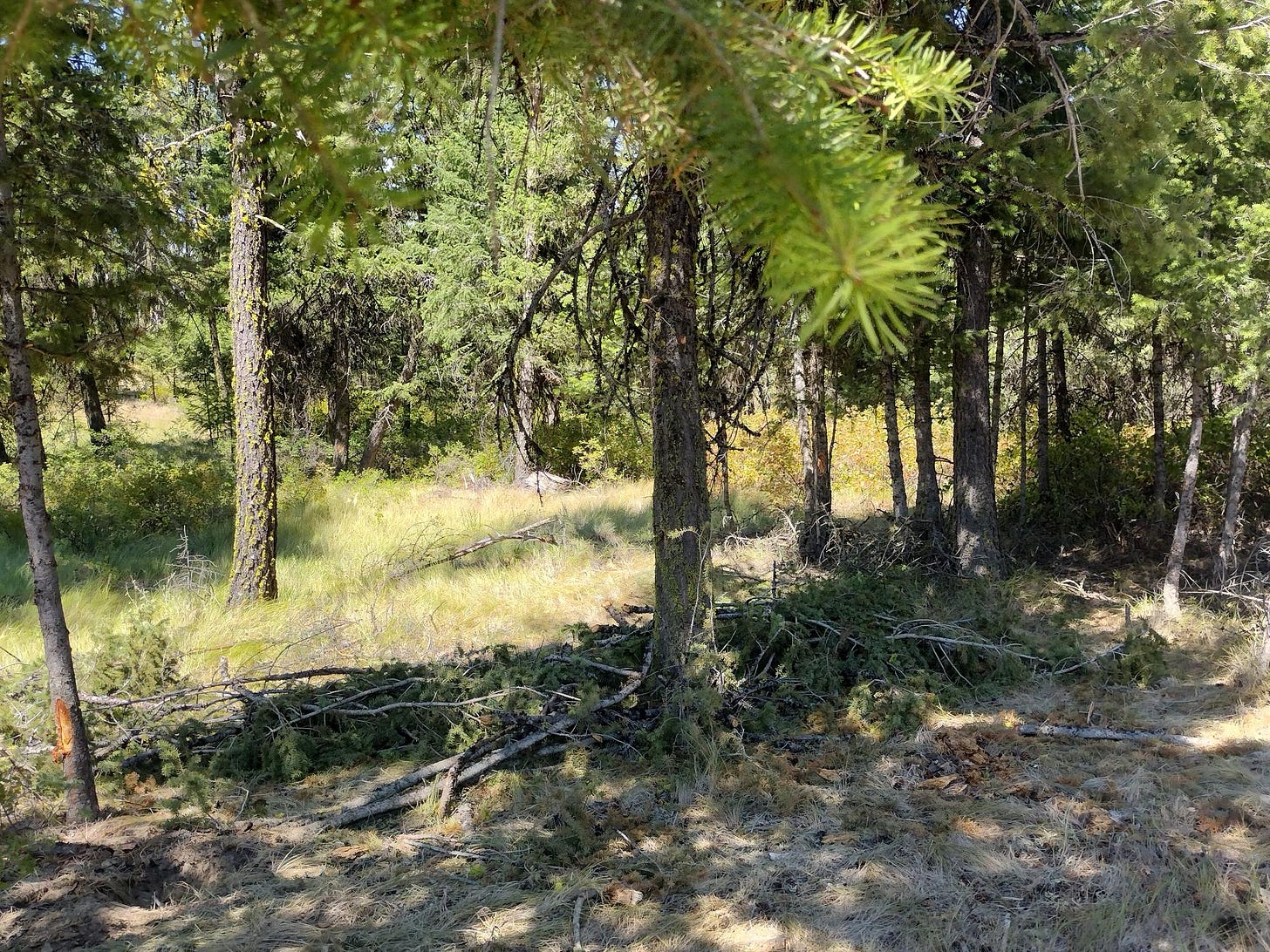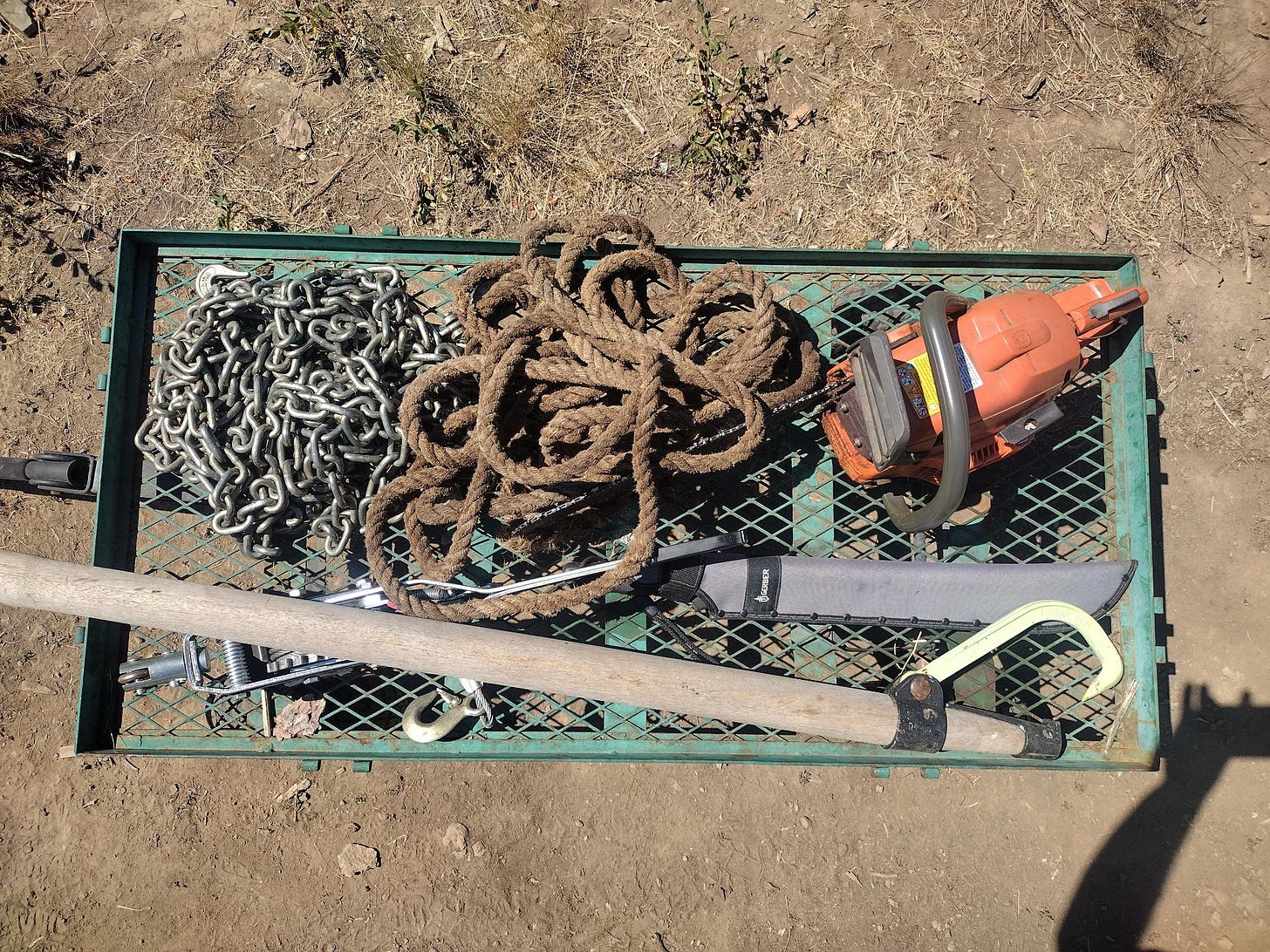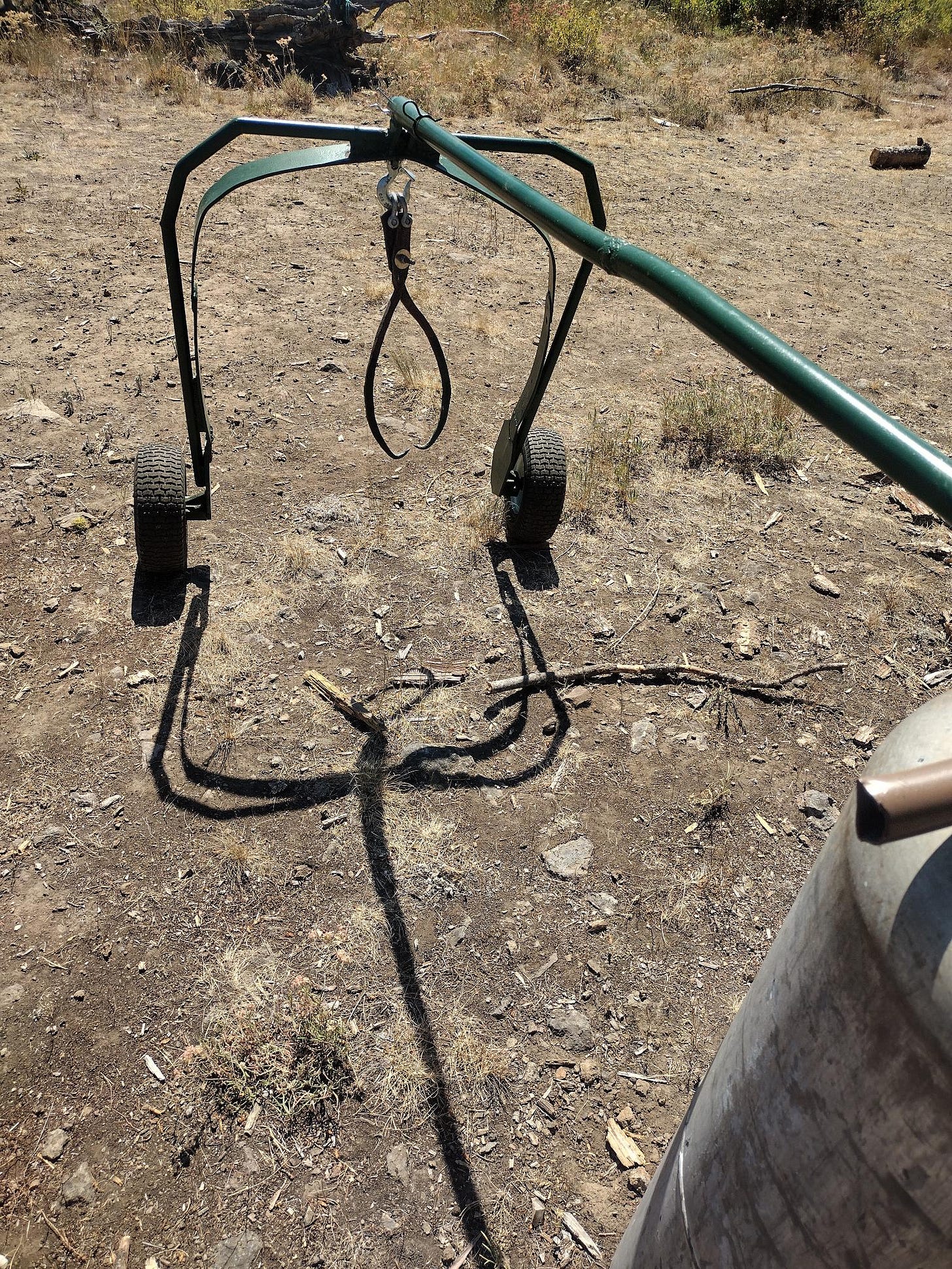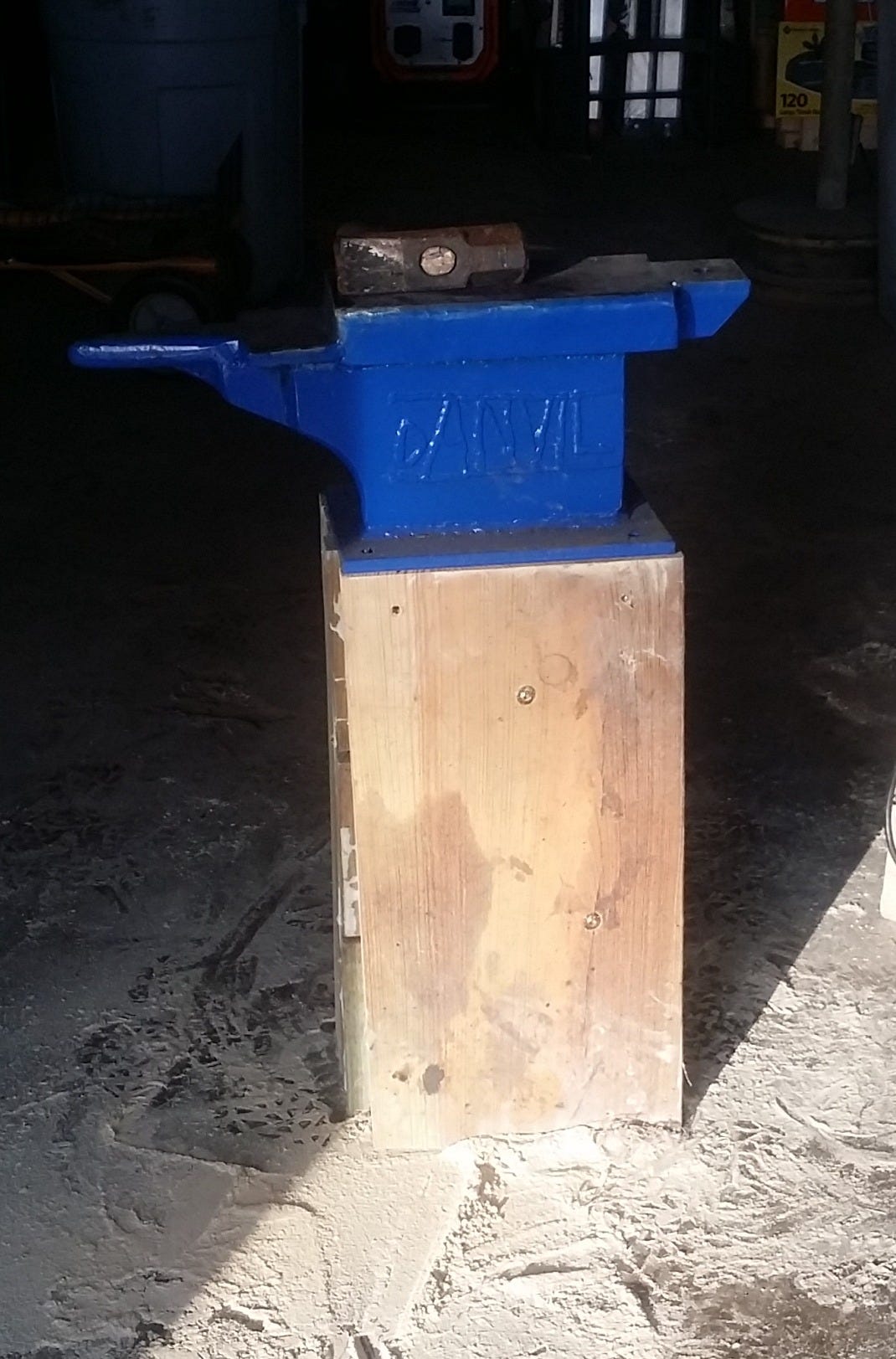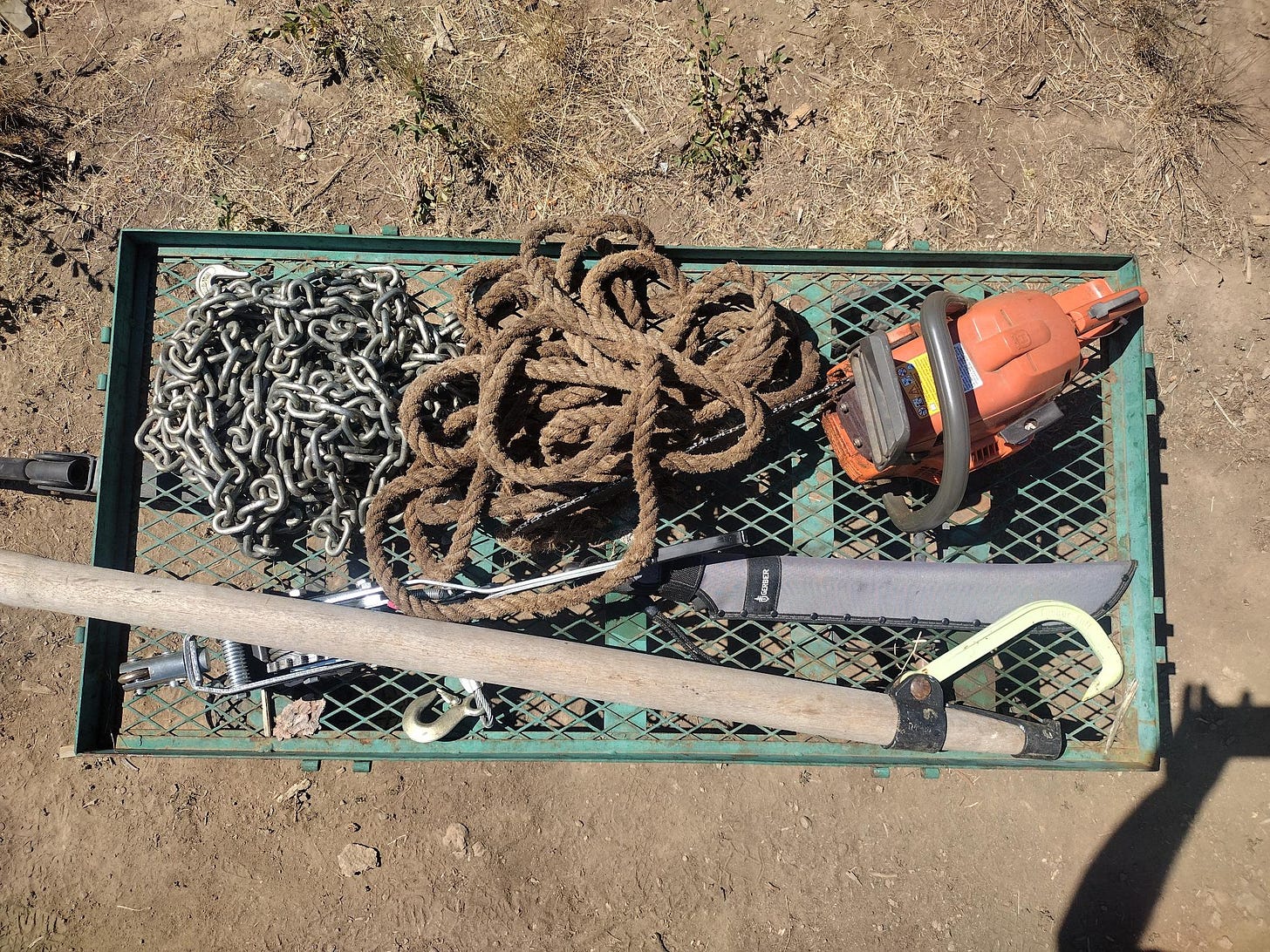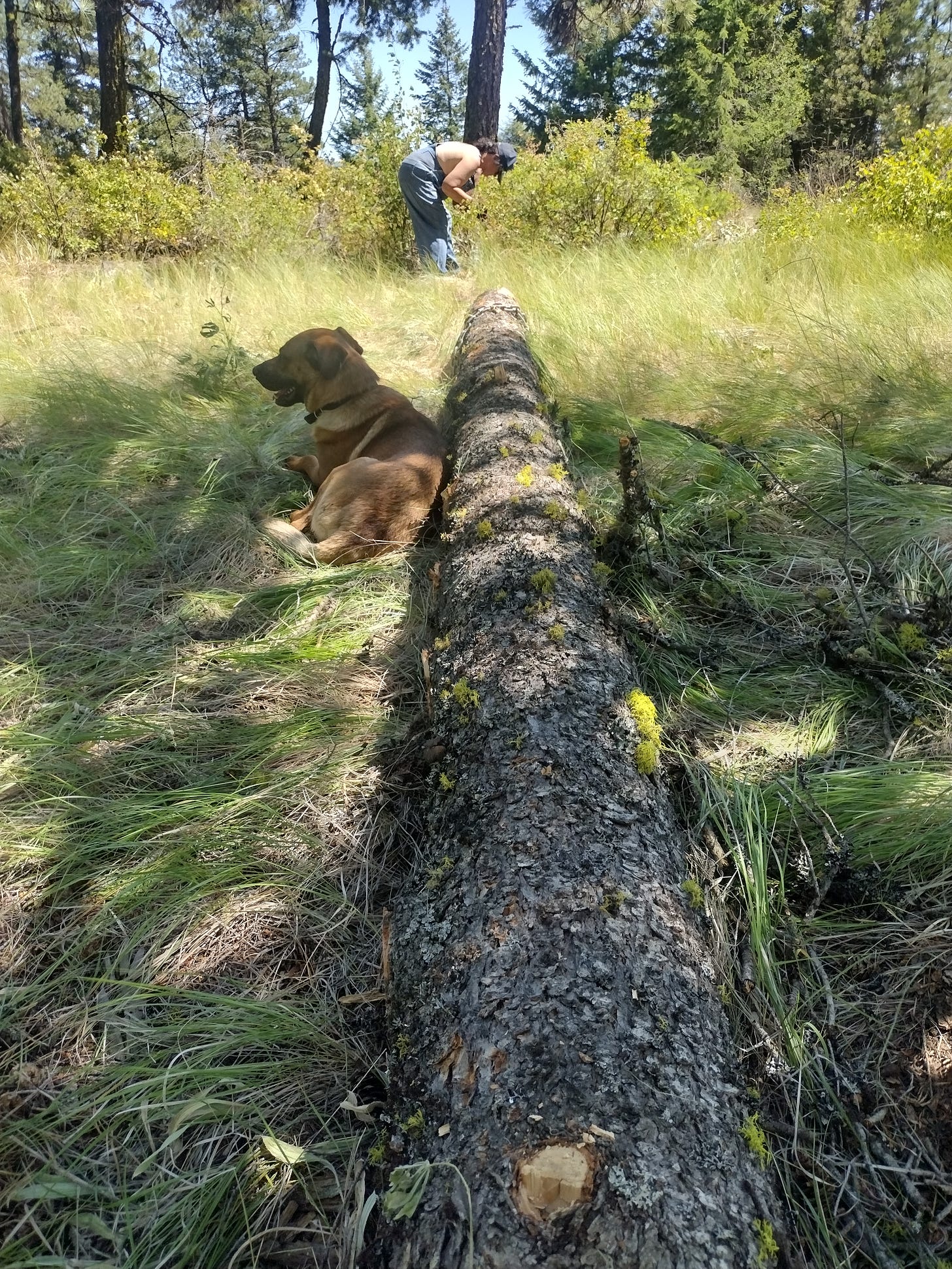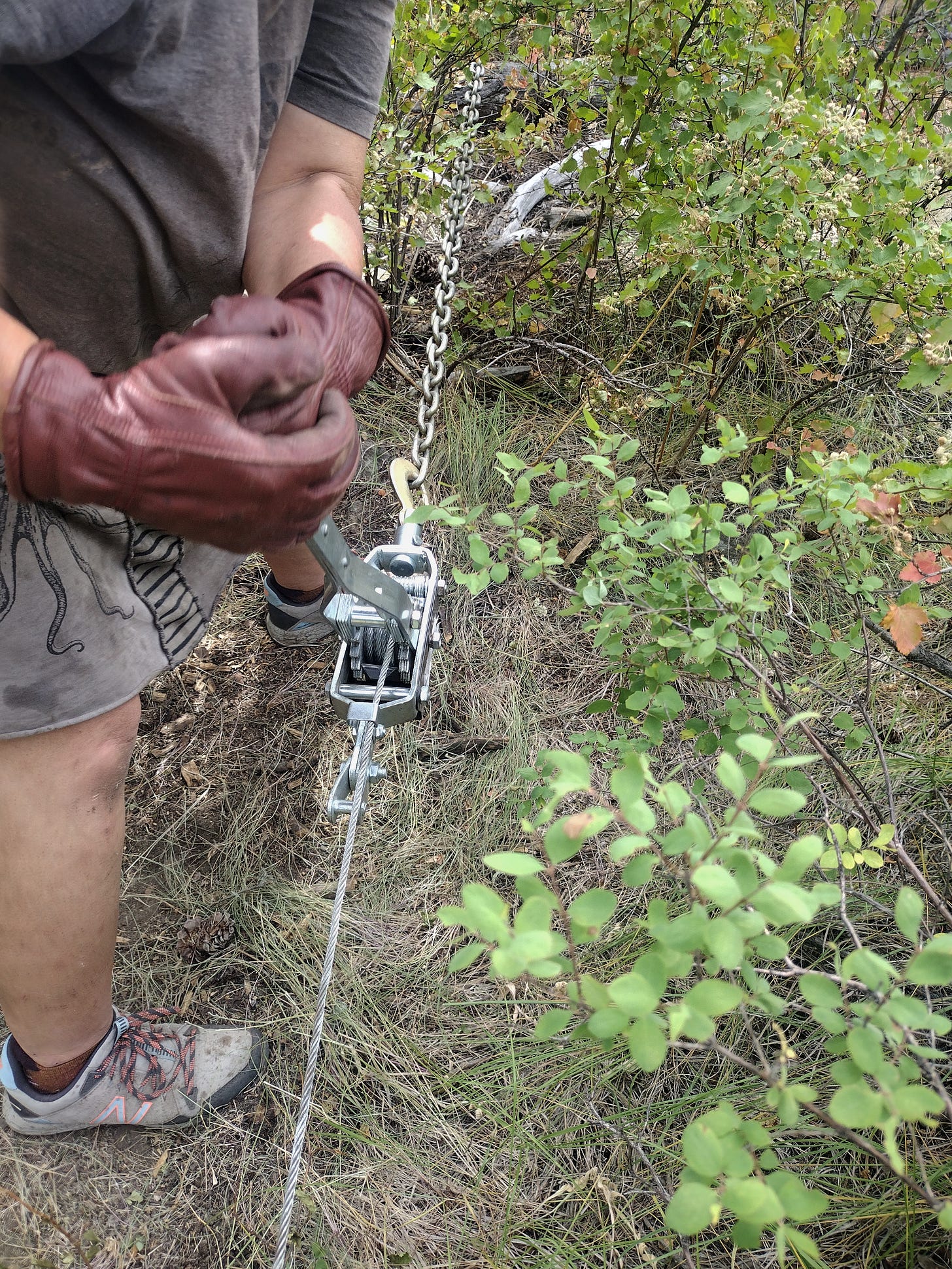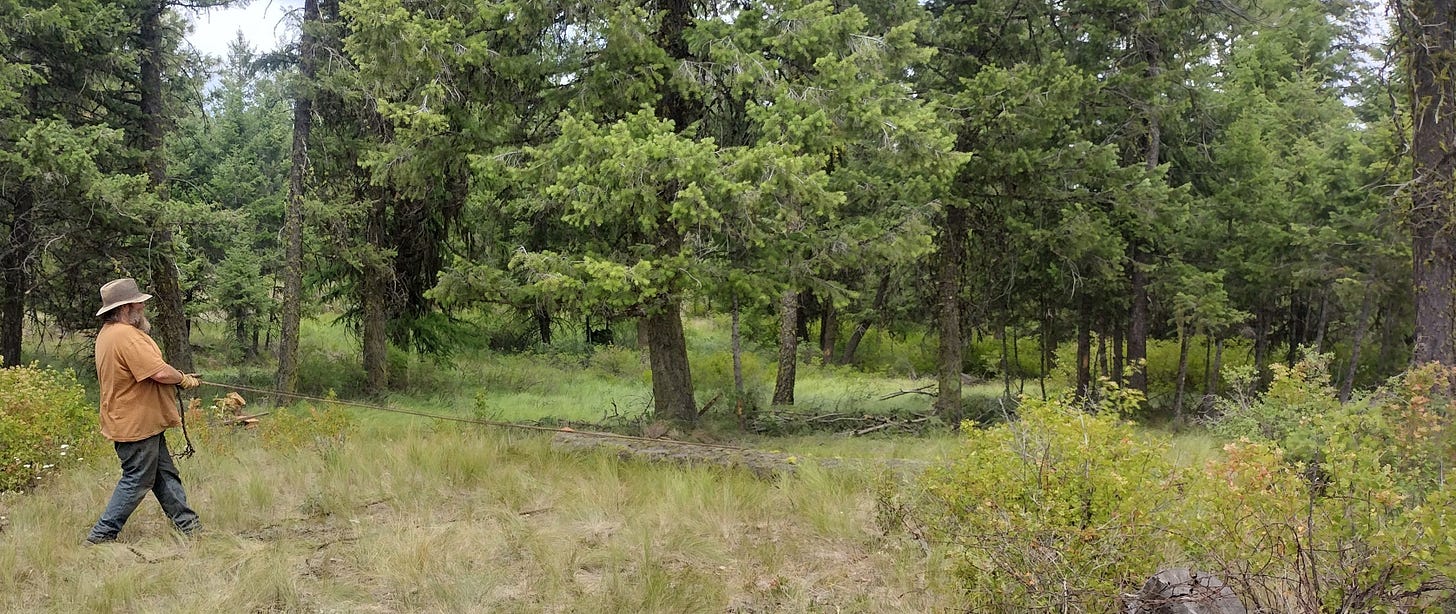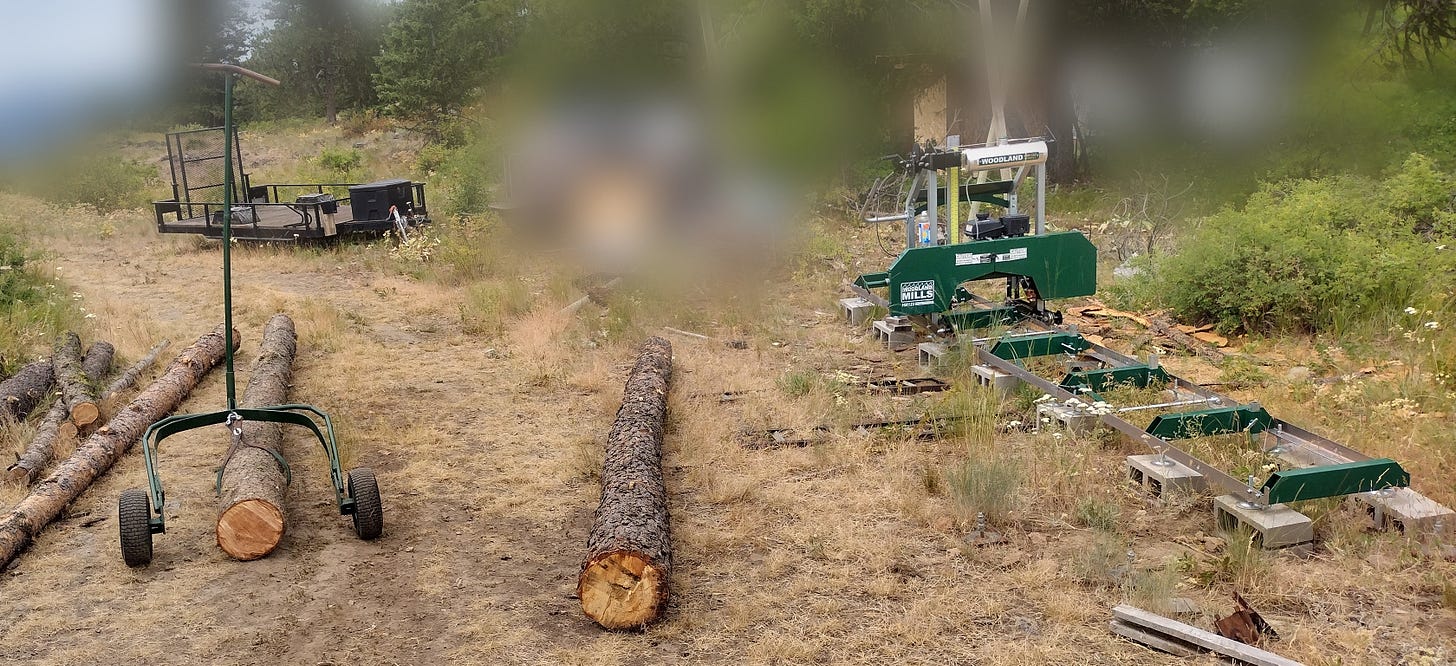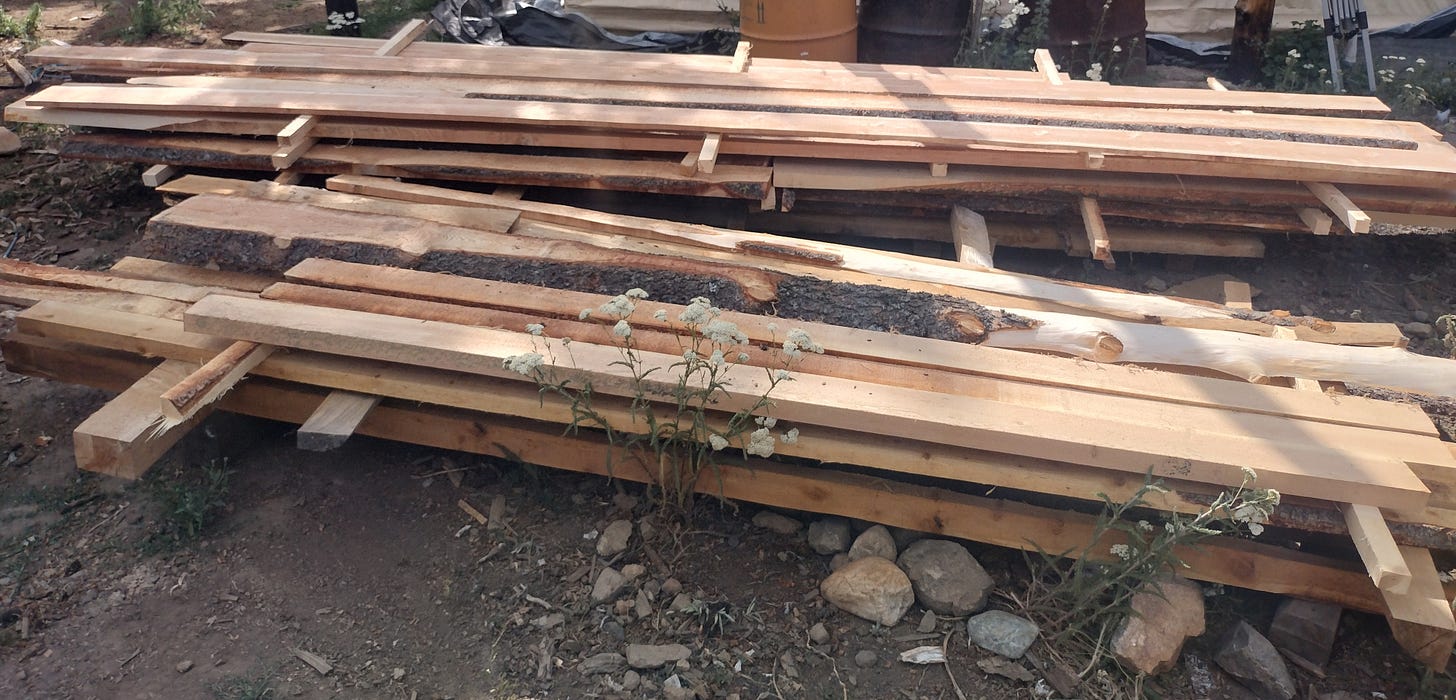Note from Holly: I’m running guest posts for the rest of August while I handle two legal messes I didn’t create — one with my landlord, one with Verizon — and try to keep my planned trauma recovery retreat on the calendar. For now, my Substack and art print income are going toward legal and moving costs. If you’ve been thinking about subscribing or picking up a print, this would be a great time.
We were in our 40s, and we weren’t in good health.
She’d been laid low and nearly killed by Covid and left chronically anemic by its complications.
I was slowly dying from a chronic illness I didn’t know I had.
And we were both in the best shape of our adult lives.
When we first met, I was a teenager, and we both loved the outdoors. On our honeymoon we both free-solo’d a five-hundred foot cliff because we thought the top would be a good place for a picnic. We weren’t exactly athletes (or even svelte), but we did okay.
But the intervening decades of desk work and rush hour and stress and dying family members slowly ground us both down to piles of powder.
Very fat, exhausted, grieving piles of powder.
I’m telling you this because you’re going to see some pictures in a little bit that will make all this seem hard to believe. I’m going to show you living proof that you can just “do stuff,” and I’m going to show you how.
Because I’m closing in on the half-century mark, and the two of us just logged and cleared a choked forest grove with no tractor, no mules, and no problems.
By hand.
The Grove
The reason we’re knocking trees down?
Well, the forest looks like this:
Basically, it’s a pile of kindling. Those of you in Europe (and maybe some of you who live here in the US) may find this difficult to believe, but we don’t have natural forests in North America. All of our forests have been shaped over hundreds of centuries by humans who farmed them for game, forage, and soil quality. In the area where I live, those ancient humans used fire as a principle management tool—every few years, they’d run burns through the forests to control the brush, re-fertilize the soil, get rid of the plants they didn’t like, and keep the forest in a state that would most happily foster the breeding and feeding of game animals (moose, elk, deer, rabbit, etc.).
When the Western Europeans got to North America, they thought “Wow, this is like the Garden of Eden” and—as their industrial exploitation of the land yielded uncongenial results—decided that they needed to leave Eden untouched by sin.
So they didn’t maintain the forests (aggressively so).
A few decades of built-up tinder and kindling in a dry forest means that when there’s a lightning strike, or a stray cigarette, or a kid with fireworks, or some dude who thinks fire is really hot and wants to go on a date with it, you get historically unusual wildfires.
And they burn so hot it can melt steel.
When they sweep through, they burn everything.
Well, for the past few years the choked-to-death forest at the top of this section has been my responsibility. It hasn’t been maintained in at least fifty years, but I’ll be damned if I let my forest burn down without a fight. Part of clearing out all that fuel is thinning out the trees so they’re not growing six-to-a-root.
And, because of the available equipment up here, I get to turn a forest that looks like that into a forest that looks like this:
Using this:
A chainsaw, a bunch of hand tools, some rope and chains…oh, and this, too:
A hand-drawn logging arch I built a couple years back (you can read the story about its design and construction by clicking here).
Aside from those tools, all I’ve got to work with are myself and my bestie who I went rock climbing with all those years ago—a pair of middle-aged city slickers who have spent most of their adult lives battling serious health problems.
I won’t bore you with the whole medical history, but if you’d like to read about how trying to be healthy in the wrong way can actually get you killed, check out my article on the topic. Suffice it to say that, if you were to imagine the ideal candidates for going back to the land and doing the whole pioneer thing the hard way, you'd be hard-pressed to find two people who looked less like prime candidates than we did:
Middle-aged, overweight white collar folks who had never even had so much as a workbench in the garage (because we lived in neighborhoods where garages were too expensive and/or using them to work on cars and projects were prohibited in the rental agreements), whose experience with maker culture was research-driven, and who (aside from some knitting) hadn’t done much work-with-hands since Jr. High shop class and high school roofing work.
Now we own a forest and build things the hard way.
Which raises an interesting question:
How do you get from there to here?
The First Lesson: Avoiding Heat Stroke
I started getting seriously sick from physical exertion in high school. When I was sixteen I spent twenty hours in heat stroke delirium after mowing a postage-stamp lawn in the 90-degree sun, and it wasn’t because I neglected my Gatorade or didn’t hose down my head for cooling. This was the final event in an escalating series of incidents that led my doctor to instructing me to avoid, at all costs, the sun and heat, or I would die.
When you start avoiding something that causes you pain, your capacity for that thing diminishes. The pain creeps outwards. Inch by inch, your sphere of action gets eaten away. Your life shrinks.
By the time I wound up leaving the city, I was more-or-less allergic to sun and heat, but I ended up in a situation where I had to do a lot of hard work in the heat in order to save a relative’s ass.
So I went outside with a bottle of water and some salt, and my computer, and I worked. For five weeks, in the stuffy summery East Coast swamp air, I worked dawn-to-dusk outdoors—writing books, editing podcasts and audiobooks, and sweating like a cold beer on a hot day. I didn’t allow myself to retreat to an air-conditioned space. If I needed a break I had to go on a walk.
Outside.
At the end of that five weeks, I ripped off the front of a house and repaired the collapsing wall (I picked up the know-how on that during a spell in my early 20s when I was hard up for work).
When I went out into the heat, I figured one of two things would happen: Either my body would figure out how to deal with the temperature well enough for me to repair my relative’s house before winter made it collapse, or I would find out once and for all that I just couldn’t hack it and would need to move to Norway or somewhere similarly chilly.
What I did not expect was that my entire system would re-form itself around the new high-stress demand. I started dropping weight, very quickly. My endurance went up—not just for the heat, but for everything. I started enjoying the hot weather—me, who hadn’t been able to operate in the heat without risking heat stroke in over twenty years!
But, when you think about it, it kinda makes sense. Our bodies are evolved to survive anywhere, and to take the path of least resistance doing it. Faced with “If I don’t figure out how to cool myself, I’m gonna cook,” a body interested in staying alive will reprogram its heat management system (and, consequently, its entire metabolic structure) pretty damn fast.
Taking this modest success as a paradigm, both I and my partner-in-crime started looking for the maximum stress points we could handle in matters physical: endurance, fitness, strength, and, in her case, a crippling fear of heights.1
The Second Lesson: Craft
By the time I was force-acclimatizing myself to the rigors of swamp air, we had already decided to leave the city behind for good. The goal was a modest patch of land where we could build a house, or maybe a place to host our friends, where we could hike anytime we wanted, and where we didn’t have to worry about landlords and their astonishingly dysfunctional feudalistic inclinations.2
If we were going to survive out in the wilderness, we were going to have to learn a lot of skills we’d only seen on TV.
I was the handier of the two of us—I’ve always maintained my own cars, I’ve built the occasional bookshelf, and I’ve cobbled together makeshift fixes on film sets from time to time. I owned a drill, and a palm sander, a hammer, and a set of wrenches and screwdrivers.
But I’d never run a chainsaw, or felled a tree. I’d only ever split wood when I had a job at a summer camp as a teenager. I’d never even seen a welder or an oxy-acetylene rig in person, let alone used either. I’d never touched a diesel engine, or a chainsaw, or a log grapple, or a twitch chain, or one of a hundred other tools that one must use up here.
So, naturally, I had to learn these things. During the time I was helping my relative fix up his house in the forever-swamp of the Eastern seaboard, I got to know his neighbor, who, several decades before, had built up the entire area from raw ground using a team of mules (because he couldn’t afford a tractor when he was starting out).
I made a deal for access to his shop, and, with the mentorship of YouTube university, I learned to weld, and to forge, and to use all the woodworking tools I could find. I learned how to choose the right saw or drill bit for the right job. I went to the local dump and grabbed a pile of scrap materials so I could build some of the tools I would need from salvaged parts (such as these two).
I spent more hours than I can count restoring a truck that I plucked off a scrap pile.

I learned to fell trees and drag them.
And, in a very short period of time, filled with a lot of very embarrassing failures and injuries, I got myself educated in the ways of the woodland warrior.
The Third Lesson: You’re On Your Own
And lo, after wandering briefly in the wilderness-bound neighbor’s shop, did we come to our mountaintop hideaway: A patch of bare land in the middle of a thick, unmaintained forest where the wrong spark will light your funeral pile. And so, did we build.
And we’re still building. We will be for several years yet.
We live at the end of nearly a mile of dirt road that nobody plows but us, and some winters it gets pretty deep. For the last three years (including the one that I wound up in the hospital), I’ve kept that road open using mostly a hand plow.
Our nearest neighbor is a quarter-mile away, and our property ranges for several hundred yards in every direction. The dogs keep the bears away, but they also go get help if one of us gets injured and we’re out of earshot of the other.
If a car breaks down (as one did this morning), we fix it here—it’s too expensive to have it towed several miles down the mountain to the mechanic’s shop. We have to get it running at least well enough to make that drive on its own.
You don’t survive up here without learning that, if the worst happens, you can’t count on someone coming to save you. It might happen—we do have good neighbors—but they can only come if they can hear you screaming. And the land is pretty damn big.
But once you internalize that lesson, you realize something else:
You really CAN do almost anything you set your mind to.
Clearing the Grove and Clearing the Air
You remember this cart of tools?
She-Who-Must-Not-Be-Named pulled it out to the grove, and we set to work.
The big difference between an everyday forest fire and a balls-out wildfire is that the latter rages out of control, and it does so because the fire climbs the trees until it gets to the canopy, and the fire spreads from treetop to treetop rather than along the ground. It moves faster up there, and gets more air, which makes it hotter.3
Step one in forest maintenance is to minimize opportunities for a fire to climb from the ground to the canopy.
So, the two of us then set-to with the machetes to clear the low dead limbs from the trees, and to clear the bushes from around the bases of the trees. It’s thirsty work, but it’s easy enough.
The nest step was marking trees for removal (most people use spray paint—I’m lazy and cheap so I just cut a notch in the bark). Proper spacing between the trees puts gaps in the canopy so that when a fire DOES climb to the top, it doesn’t necessarily spread before the tree it climbed burns down.
With that done, we knocked down the trees we were taking and used the machetes to cut their limbs off.
All that’s easy. Any ten year-old can do it with a little bit of coaching and practice.
The next part…not so easy.
There are three things you can do with a downed tree:
leave it there to rot and fertilize the forest
cut it up for firewood and remove it
remove it as a log and use it to build things
Well, we’ve got a very fertile forest and we left a lot to rot, we’re full-up on firewood, and we’re building things…so guess which one we picked?
Log Moving
So here’s the math: An eighteen-inch-diameter, sixteen foot log from a fresh-cut fir tree, like this one…
…weighs around a little under a thousand pounds.
That’s around five of me.
The trees we took that day had four of those, and then some smaller logs (weighing as little as 350lbs). We had to get those logs to the log dolly, and then lift them with the log dolly, hook them with the grapple, and then lift them so that we can drag them with that dolly to the mill (a distance of around a thousand feet).
How do you move a big bloody log like that with your hands?
Remember your introductory physics? Think about levers and wheels.
Using a hooked lever called a “peavy,” I rocked the log back and forth to work a chain underneath it, then looped the chain back to itself. This makes what’s called a “twitch chain,” which grips onto the log due to friction. The twitch chain runs to another kind of lever—a come-along winch—which is tied around another tree.
Working the lever on the come-along back and forth, you get the log into a place where you can roll it over the uneven ground to the dolly waiting at the road.
Once there, you again rock the log back and forth to work a length of rope under it, and then you use the rope and your arms/feet to roll the log to the road.
Once there, you lift the log into the grapple on the dolly, and drag it to the mill.
We cleared the grove in a day, and over the next few days, I turned those logs into lumber for the sheds and shop and barn we’re building:
Take it Away
There’s been a lot of talk recently about talent—whether it’s real, whether it’s not, and what it means.
I think it’s a bullshit conversation, and here’s why:
You don’t know your limits.
You don’t know how creative you can be if you REALLY needed to be.
You don’t know how long you can go without food or water.
You don’t know what you can learn, or what you can accomplish, if you’re sufficiently motivated.
Because you’ve never been sufficiently motivated.
This isn’t a slight on your character, this is a fact of life in the modern world. Even the poorest and most abused among us rarely get pushed to our actual limits (and if you don’t believe me, consider how rare suicide really is). There is more about you than you know.
I’m still not in tip-top shape. I spent six of the last fourteen months flat on my back with a terminal illness and life-saving surgery. A a few years ago, I couldn’t have even hiked outside in the weather we cleared that grove in. I’m almost fifty yeas old, and well on the biological downslope. Yet here I am, carrying a 400lb log in 95 degree heat on a cloudless day, and doing it without injuring myself:
And my partner-in-forestry could barely lift a five-gallon water jug four years ago, yet here she is, all five-foot-two-inches of her, at the age of fifty, lifting a nearly half-ton log using a few feet of climbing rope:
Two middle-aged city slickers with health problems managing a forest with hand tools.
When you consider that our ancestors built Stonehenge and Angkor Wot and the Pyramids and the Parthenon and the Pantheon with hand tools; when you realize that every one of your ancestors before a generation or two ago kept going until they dropped; when you realize that language and machines (and most of what these things have built) are all the products of people who needed to do a job, and not of eggheads in ivory towers; when you consider that humanity has come this far by tasking their minds and bodies to use dirt, fire, and sticks to improve their lot in life, you start to realize:
If you’re willing to pour yourself into it, and not hold back, then whatever it is you think you can’t do…
…you probably can.
To this day she attributes that honeymoon rock-climbing adventure to post-orgasmic psychosis.
The amount of unbearable, unnecessary drama I have seen over the years from individual landlords who treat their rental properties sentimentally (and I’m not just talking people I’ve rented from) could fill up the Disaffected Podcast Hall of Infamy. Seriously, guys, if you own a place you’re renting out, you’re running a business. You’re not “letting people stay in your childhood [or whatever] home.” If you have a sentimental building, or you get really invested in the renovations, don’t rent it out. Even the most conscientious tenant who treats your property like it belongs to God will have tastes, habits, and affectations that you can’t stand. Cash your check, do repairs when necessary, smile because your investment is paying off, and butt the hell out of your tenants’ personal lives.
But I digress…
The technical name for this child of Logi is a “Crown Fire.”



